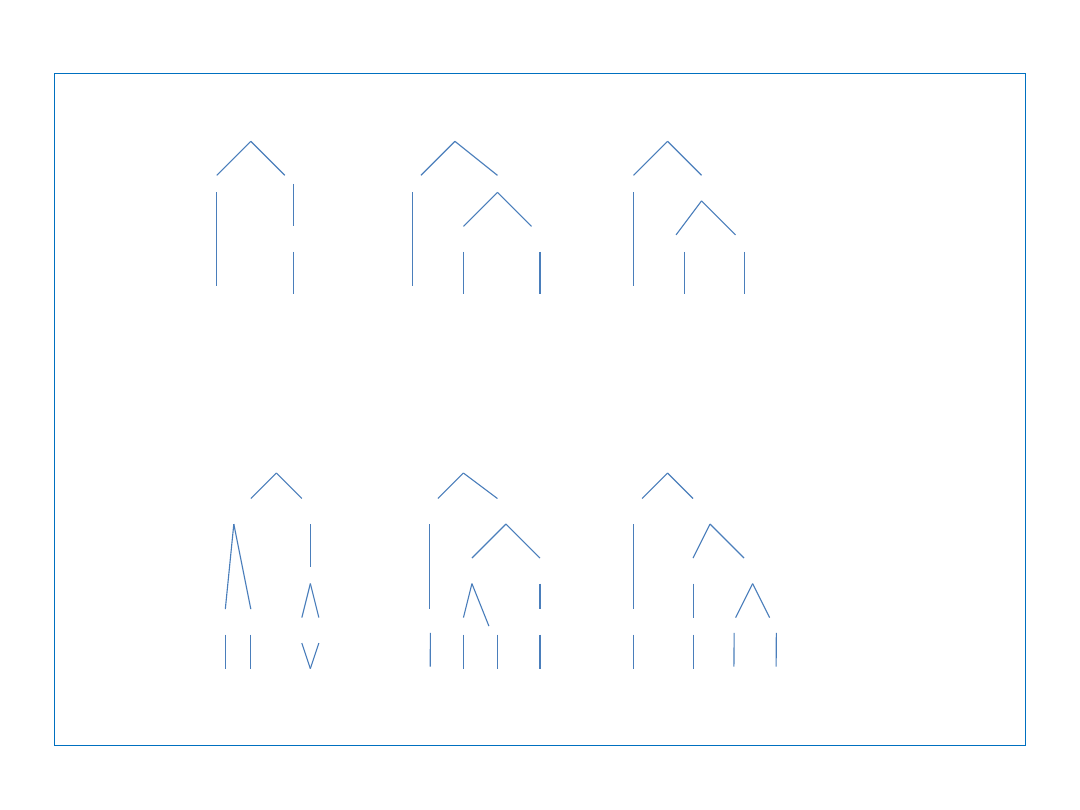
6. Syllables
6. Syllab
6.1 Introduction
- Syllables has an important role with respect to the phonotactic constraints
in Languages. This refers to the system of sound sequences. It is on the basis
that a speaker of English can judge some new form as a possible or
impossible word:
◈ Both [blɪt] and [bmɪt] are non-existent as English words, but English
speakers choose the former is an English words because [bl] is a
possible onset cluster in English, not [bm].
◈ However, the sequence [bm] is possible in a word only if these sounds
are in different syllables:
e.g.) submarine [sʌb.mə.rin], submission [sʌb.mɪ.ʃən]
◈ Therefore, the rejection of a word such as [bmɪt] is strictly based on a
syllable-related generalization.

- In several languages (English included) in which the stress is
sensitive
to the structure of syllables, the structure of the rhyme is the
determining factor; onset do not count.
- The restriction in the onset is that a stop cannot be followed by a
nasal:
e.g.) batman, admonish
Similarly, non-homorganic nasal + stop cannot be coda clusters:
[lɪmk] is impossible.
Non-homorganic sequences across syllables are possible:
kumquat [kʌm.kwat] pumpkin [pʌmp.kɪn]
- Voicing agreement in the sequences of two obstruents:
The sequences of bilabial stops and alveolar fricatives agree in voicing in
the tautosyllabic structures: cubs [kʌbz], cups [kʌps]
But when the sequences can be splitted by a syllable boundary, voicing
agreement does not appear: absurd [æb.s
ɚd], obsolete [ab.sə.lit]
- In several languages (English included) in which the stress is
sensitive
to the structure of syllables, the structure of the rhyme is the
determining factor; onset do not count.
- The restriction in the onset is that a stop cannot be followed by a
nasal:
e.g.) batman, admonish
Similarly, non-homorganic nasal + stop cannot be coda clusters:
[lɪmk] is impossible.
Non-homorganic sequences across syllables are possible:
kumquat [kʌm.kwat] pumpkin [pʌmp.kɪn]
- Voicing agreement in the sequences of two obstruents:
The sequences of bilabial stops and alveolar fricatives agree in voicing in
the tautosyllabic structures: cubs [kʌbz], cups [kʌps]
But when the sequences can be splitted by a syllable boundary, voicing
agreement does not appear: absurd [æb.s
ɚd], obsolete [ab.sə.lit]

- Syllable Structure:
blue side wind
O R O R O R
N N C N C
bl u s
aɪ d w ɪ nd
- This structure is not sufficient to make any distinction between the nucleus
of a long vowel and a short vowel. To remedy this situation, we introduce a
skeletal tier (“x”) that reveals the timing slot for each unit.
blue side wind
O R O R O R
N N C N C
x x x x x x x x x x x x
b l u s a ɪ d w ɪ n d

- Long vowels and diphthongs will have two timing slots (branching),
whereas short vowels will have one (non-branching). Multiple onsets or
codas will also be branching.
- Draw the syllable structure with timing slots of these words:
dog, chart, drench --(see page 157)
- Long vowels and diphthongs will have two timing slots (branching),
whereas short vowels will have one (non-branching). Multiple onsets o
codas will also be branching.
- Draw the syllable structure with timing slots of these words:
dog, chart, drench --(see page 157)